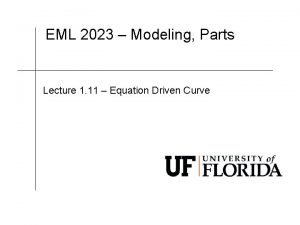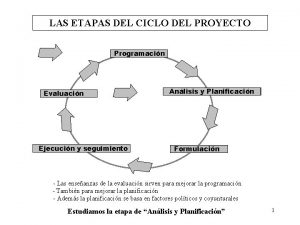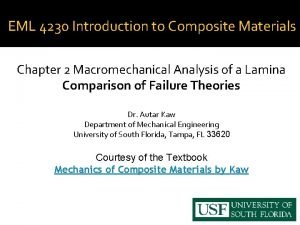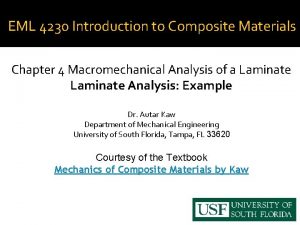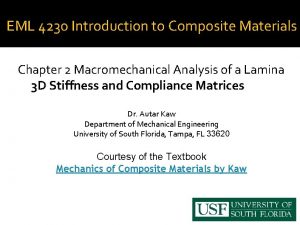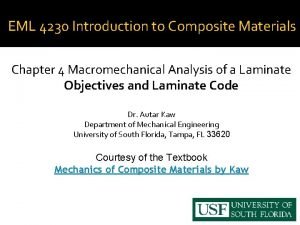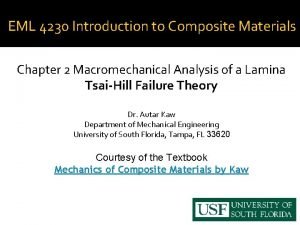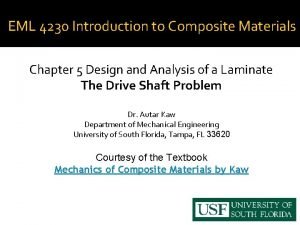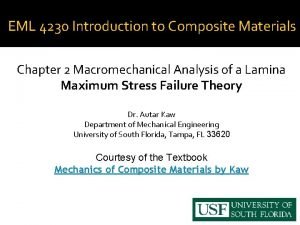EML 4230 Introduction to Composite Materials Chapter 2










- Slides: 10

EML 4230 Introduction to Composite Materials Chapter 2 Macromechanical Analysis of a Lamina Maximum Strain Failure Theory Dr. Autar Kaw Department of Mechanical Engineering University of South Florida, Tampa, FL 33620 Courtesy of the Textbook Mechanics of Composite Materials by Kaw

Strength Failure Theories for an Angle Lamina � The failure theories are generally based on the normal and shear strengths of a unidirectional lamina. � In the case of a unidirectional lamina, the five strength parameters are: q Longitudinal tensile strength q Longitudinal compressive strength q Transverse tensile strength q Transverse compressive strength q In-plane shear strength

Maximum Strain Theory � The lamina is considered to be failed if: is violated, where: = Ultimate longitudinal tensile strain (in direction 1), = Ultimate longitudinal compressive strain (in direction 1), = Ultimate transverse tensile strain (in direction 2), = Ultimate transverse compressive strain (in direction 2), = Ultimate in-plane shear strain (in plane 1 -2).

Example Find the maximum value of S>0 if a stress of is applied to a 60 o lamina of Graphite/Epoxy. Use Maximum Strain Failure Theory. Use properties of a unidirectional Graphite/Epoxy lamina given in Table 2. 1 of the textbook Mechanics of Composite Materials by Autar Kaw. FIGURE 2. 33 Off-axis loading in the x-direction

Solution The stresses in the local axes are:

Example The strains in the local axes are:

Example Assume there is a linear relationship between all the stresses and strains till failure, then the ultimate failure strains are:

Example or: which give:

Observations • The strength ratio from Maximum Stress Failure Theory and Maximum Strain Failure Theory is 16. 33 MPa. There is no difference between the two values because the mode of failure is shear. • However, if the mode of failure were other than shear, there would have been a difference between the strength ratios due to the Poisson's ratio effect, which couples the normal strains and stresses in the local axes. • Neither, the Maximum Stress Failure Theory nor the Maximum Strain Failure Theory have any coupling between the three possible modes of failure.

END




